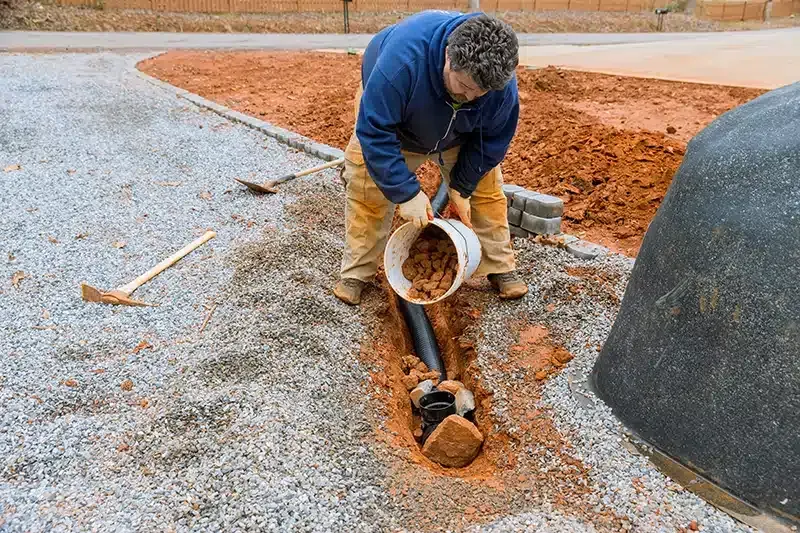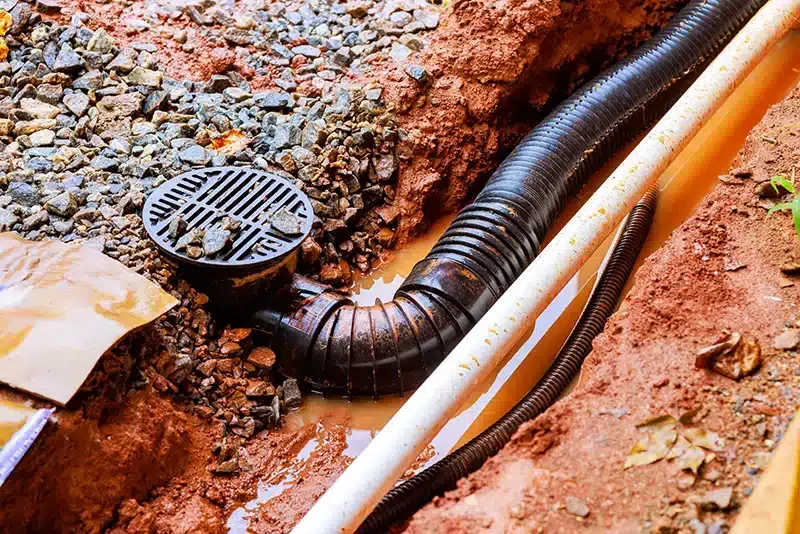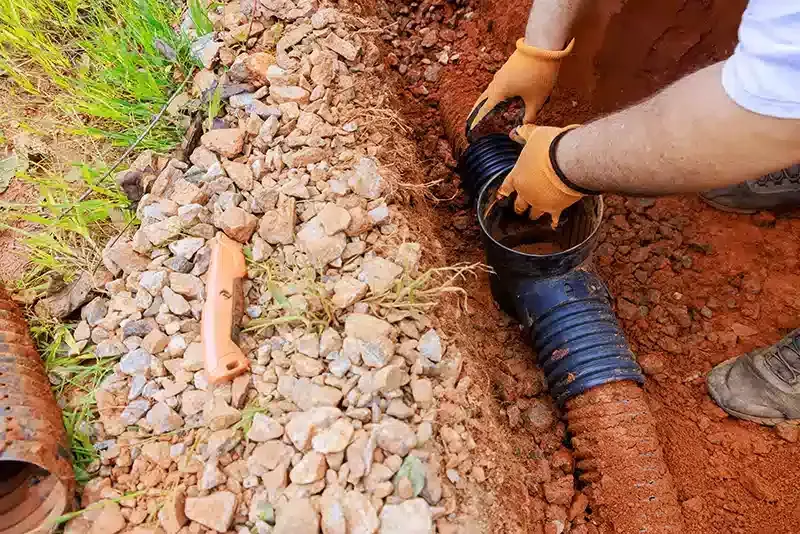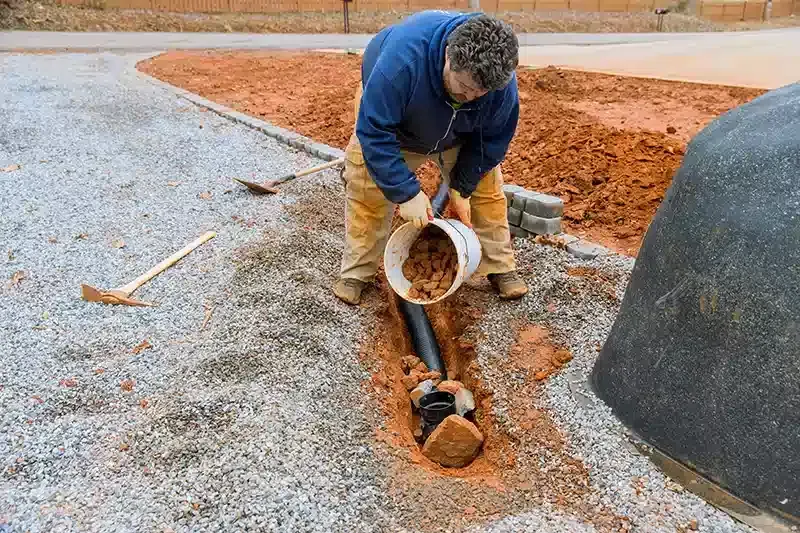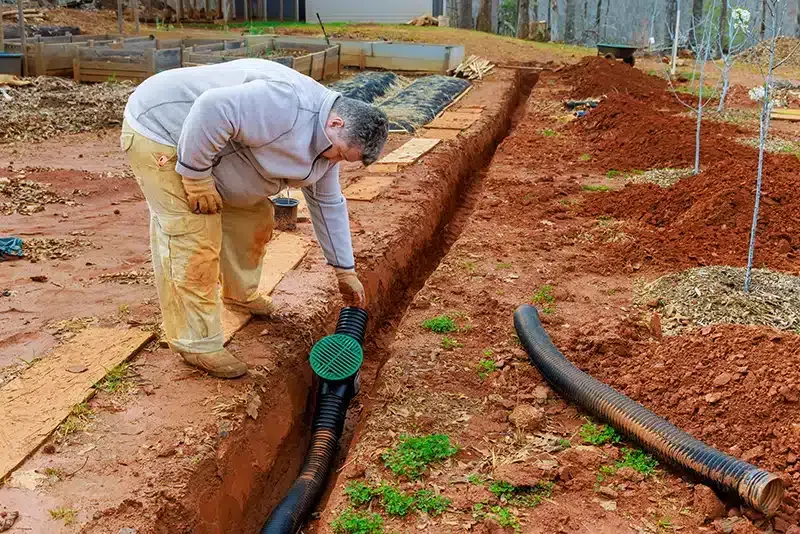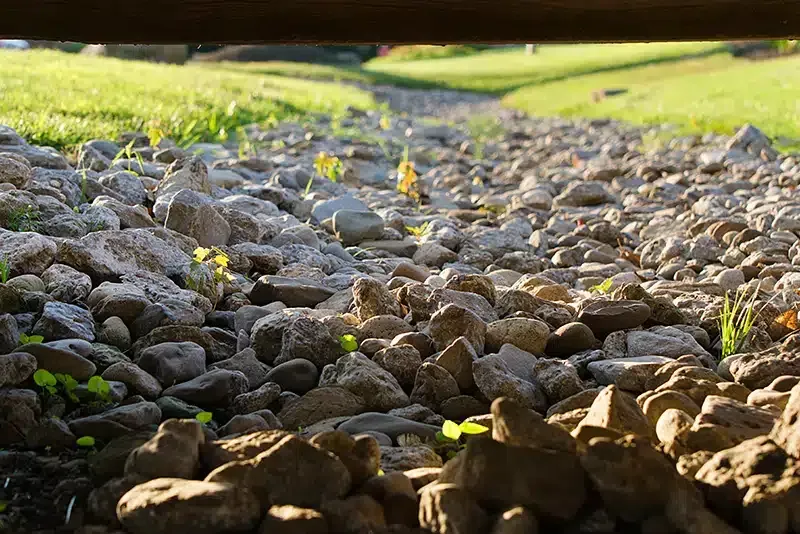How to Install a Yard Drainage System: A Step-by-Step Guide
How to Install a Yard Drainage System: A Step-by-Step Guide
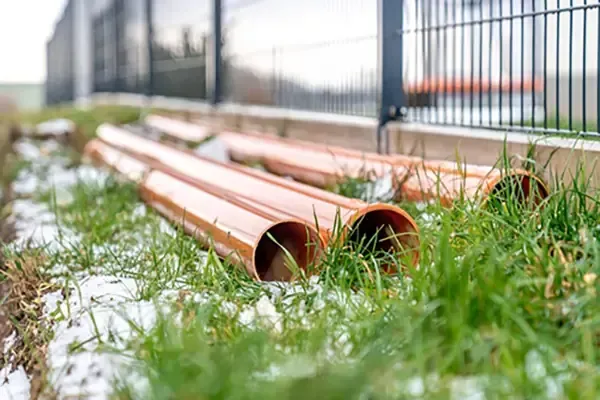
Welcome to our comprehensive guide on installing a yard drainage system. If you are constantly battling with pools of water in your yard after every rainfall, then this guide is for you. You might think that installing a drainage system is a complex task, but with our step-by-step guide, you will find it to be a manageable and rewarding DIY project.
From plotting the drainage path to restoring your yard's surface, we have got you covered. Stay with us as we explore the numerous advantages of a properly drained yard.
Understanding the Basics of Yard Drainage Systems
Yard drainage systems are designed to manage water flow, preventing damage to your home’s foundation and landscape. They help redirect excess water to safer areas.
What Is a Yard Drainage System?
These systems move water away from your property, ensuring it doesn’t pool or cause damage.
Key Points:
- Redirects Water: Keeps water away from foundations and landscapes.
- Common Types: French drains, gutter downspouts, surface drains.
- Discharge Locations: Directs water to storm drains or streets.
Why You Need a Drainage System
Effective drainage protects your home and garden.
Benefits:
- Prevents Foundation Damage: Stops water from damaging your foundation.
- Preserves Landscaping: Avoids overwatering and waterlogging.
- Reduces Erosion: Prevents soil erosion around your yard.
Customizing Your System
Not all drainage systems suit every property.
Things to Consider:
- Yard Slope: Water flows downhill, so consider your yard’s grade.
- Soil Type: Different soils absorb water at varying rates.
- Climate: Heavy rain or snowmelt might require a more robust system.
Understanding your yard’s needs helps you choose the right drainage solution for long-term protection.
Steps to Installing Your Own Yard Drainage System
Ready to tackle your yard drainage project? Follow these simple steps to ensure a smooth installation process.
Identify Low Points in Your Yard
Locate areas where water collects and tends to pool.
Tips:
- Mark the spots with flags or stakes for easy reference.
- Look for areas that stay soggy after rainfall.
Plan the Path for the Drainage Pipe
Determine where the pipe will go, ensuring it moves water away from your house.
Considerations:
- Avoid Utility Lines: Check for underground pipes or cables.
- Choose a Downhill Path: Ensure the slope moves away from your foundation.
Dig the Trench
Dig a trench along the planned path, making sure it has a slight slope.
Digging Tips:
- Maintain a gentle slope (1-2%) to direct water.
- Make the trench wide enough to fit gravel and pipe.
Install the Gravel and Pipe
Create a stable base for the drainage system.
Steps:
- Add a layer of gravel to the bottom of the trench.
- Place the perforated pipe with the holes facing down.
- Cover the pipe with more gravel.
Backfill and Replant
Fill the trench and restore the surface of your yard.
Final Touches:
- Backfill the trench with soil.
- Plant grass seed or cover the area with turf to blend it into your lawn.
And there you have it! You’ve installed your own yard drainage system and are ready to enjoy a drier, healthier landscape.
Maintaining and Troubleshooting Your Yard Drainage System
Proper maintenance is key to keeping your yard drainage system functioning well and avoiding future issues. Regular checks can save you time and money in the long run.
Inspect Your System Annually
Regular inspections help catch potential problems early.
What to Look For:
- Pooling Water: Indicates slow drainage or clogging.
- Slow Drainage: Water moving sluggishly could signal blockages.
Clean Your System
If you spot issues, it’s time to clean the drainage system.
Cleaning Methods:
- Plumber’s Snake: Use to clear minor blockages.
- High-Pressure Water: Effective for clearing stubborn debris.
Call a Professional If Needed
If cleaning doesn’t solve the problem, it might be time to get expert help.
When to Call:
- Persistent Clogs: If blockages keep reappearing.
- Complex Problems: For serious issues beyond basic maintenance.
4. Prevent Future Problems
Stay proactive to avoid future headaches.
Maintenance Tips:
- Regular Inspections: Check your system yearly, especially after heavy rain.
- Clear Debris: Keep gutters and drains free of leaves and twigs.
By keeping up with maintenance and troubleshooting, you’ll ensure your yard drainage system continues to protect your property and landscaping.
Installing a yard drainage system can be a rewarding DIY project that not only enhances the aesthetics of your yard but also provides essential protection to your property. With regular maintenance and checks, your system will continue to function efficiently and effectively.
Whether you're dealing with a soggy lawn, pooling water, or erosion, a well-installed and maintained yard drainage system is your best defense. Not only will it keep your yard looking its best, but it will also help to preserve your home's foundation and landscaping for years to come. Happy draining!
